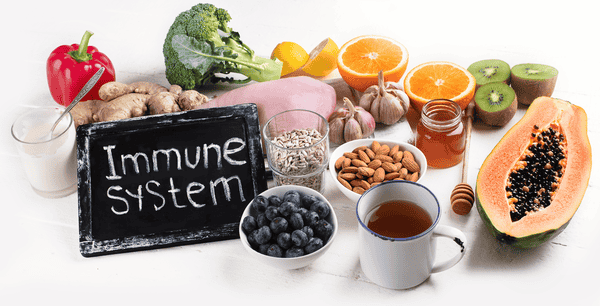Introduction
Meet Martha, an energetic 75-year-old who loved to garden, read, and spend time with her grandchildren. However, after losing her husband, she noticed a decline in her energy and health. Concerned about her well-being, her granddaughter Emily, a nutritionist, stepped in to help. They embarked on a journey to revitalize Martha’s health through a balanced diet. This blog explores Martha’s experience and provides practical nutrition guideline for maintaining a nutritionally balanced diet as we age.
The Importance of a Balanced Diet
As we grow older, our bodies require different nutrition to function optimally. A balanced diet for seniors should include:
- Fruits and Vegetables: Aim for a variety of colors and types to ensure a wide range of vitamins and minerals.
- Whole Grains: Choose whole-grain bread, brown rice, and oats to provide essential fiber and energy.
- Lean Proteins: Incorporate sources like chicken, fish, beans, and tofu to maintain muscle mass and support overall health.
- Healthy Fats: Include avocados, nuts, and olive oil to promote heart health.
- Dairy or Alternatives: Choose low-fat or fat-free dairy options or fortified plant-based alternatives to meet calcium needs.
A Week of Healthy Eating
As Martha and Emily began their journey, they crafted a week of healthy eating that would be simple and enjoyable.
Monday
- Breakfast: Greek yogurt with honey, fresh berries, and a sprinkle of chia seeds.
- Lunch: A salad with mixed greens, grilled chicken, avocado, and a light vinaigrette.
- Dinner: Baked salmon with a side of quinoa and steamed broccoli.
- Snacks: An apple with almond butter and a handful of walnuts.
Tuesday
- Breakfast: Oatmeal cooked with milk, topped with sliced bananas and a drizzle of maple syrup.
- Lunch: A whole-grain wrap with turkey, spinach, tomatoes, and hummus.
- Dinner: Lentil soup with a side of whole-grain bread.
- Snacks: Carrot sticks with hummus and a small piece of dark chocolate.
Wednesday
- Breakfast: Smoothie made with spinach, kale, frozen berries, and a scoop of protein powder.
- Lunch: Quinoa salad with black beans, corn, bell peppers, and a cilantro-lime dressing.
- Dinner: Grilled chicken with sweet potato wedges and a side of green beans.
- Snacks: A pear with a handful of mixed nuts and a hard-boiled egg.
Thursday
- Breakfast: Whole-grain toast with avocado, a poached egg, and a sprinkle of chili flakes.
- Lunch: Tomato and basil soup with a side of whole-grain crackers.
- Dinner: Stir-fried tofu with mixed vegetables and brown rice.
- Snacks: Greek yogurt with honey and a handful of blueberries, and a slice of cheese.
Friday
- Breakfast: Cottage cheese with pineapple chunks and a sprinkle of flaxseeds.
- Lunch: Spinach and feta stuffed chicken breast with a side of couscous.
- Dinner: Whole-wheat pasta with marinara sauce, lean ground turkey, and a side salad.
- Snacks: A banana with peanut butter and a handful of almonds.
Saturday
- Breakfast: Scrambled eggs with spinach, tomatoes, and mushrooms.
- Lunch: Tuna salad with mixed greens, cherry tomatoes, and a balsamic vinaigrette.
- Dinner: Baked cod with a side of wild rice and steamed asparagus.
- Snacks: A peach with a handful of cashews and a small square of dark chocolate.
Sunday
- Breakfast: Pancakes made with whole-wheat flour, topped with fresh strawberries and a dollop of Greek yogurt.
- Lunch: Chickpea and vegetable stir-fry with a side of brown rice.
- Dinner: Roasted chicken with garlic mashed cauliflower and a side of sautéed spinach.
- Snacks: An orange with a handful of sunflower seeds and a small bowl of mixed berries.
Addressing Common Concerns
As Martha and Emily reviewed the nutrition plan, they addressed some of Martha’s common concerns.
- Loss of Appetite: Emily suggested incorporating nutrient-dense snacks to ensure Martha was still getting the necessary nutrients even when her appetite was low.
- Cooking for One: Emily recommended batch cooking and freezing portions to make meal preparation easier and reduce waste.
- Budget-Friendly Options: Emily highlighted affordable protein sources like beans and lentils and advised buying fruits and vegetables in season to save money.
Staying Active
Emily also stressed the importance of staying physically active. She recommended gentle exercises like walking, yoga, and swimming to help maintain muscle mass and overall health. Martha joined a local senior fitness class, where she made new friends and enjoyed the social aspect of exercising together.
The Impact on Life Expectancy
Emily addressed the often-asked question about the impact of diet on life expectancy for the elderly. She explained that while factors such as genetics and overall health play significant roles, maintaining nutrition balanced diet could enhance quality of life and potentially contribute to longevity.
“By focusing on nutrient-rich foods, staying hydrated, and maintaining a healthy lifestyle, you can improve your health outcomes and enjoy a fulfilling life,” Emily assured Martha.
Emotional and Mental Well-being
Emily emphasized the connection between diet and emotional well-being. She encouraged Martha to engage in activities that brought her joy and reduced stress, such as gardening, reading, or spending time with loved ones. They also discussed the benefits of mindfulness and meditation to support mental health.
Reflecting on the Journey
A year later, Martha’s life had transformed significantly. She felt more energetic, her mind was sharper, and she enjoyed a renewed sense of well-being. Her improved diet, combined with regular physical activity and staying socially connected, had made a profound impact on her overall health.
Martha often shared her journey with friends at the community center, inspiring them to make healthier choices. She was grateful for Emily’s guidance and the realization that simple dietary changes could profoundly affect her quality of life.
Conclusion
Martha’s story is a testament to the power of nutrition balanced diet. As we age, paying attention to what we eat becomes even more critical. By focusing on wholesome, nutrient-rich foods, staying hydrated, and enjoying the process of eating, we can all lead healthier, more fulfilling lives.
Whether you’re helping a loved one or taking steps for yourself, remember that it’s never too late to make positive changes. With a bit of planning and support, a balanced diet can become a cornerstone of good health and happiness in the golden years.














It’s awesome to visit this site and reading the views of all friends on the topic of this paragraph,
while I am also eager of getting familiarity.
Uncover the future of gaming with Empire of Musk – a revolutionary Web3 adventure! Grow your business empire without in-app purchases. Boost your investments to amplify your revenue stream. Engage, earn, and down the line convert in-game currency for actual cash. Dive into the Musk Empire now and shape your digital fortune! Link https://gourl.tech/XEmpire